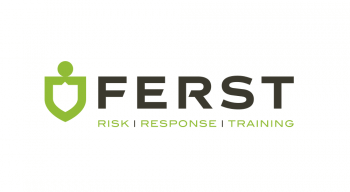Developing Responses to Hostile Incidents
Incidents within the “Hostile Intruder” spectrum may occur as a singular event requiring a response by the occupants of a facility. However, as we have seen time and time again, a situation may rapidly develop from one incident, such as a suspicious person within the facility’s grounds to another, more serious and potentially deadly occurrence like an active armed offender.
During my time within the Australian Defence Force as a Combat Engineer and later an Explosive Ordnance Disposal Technician, a critical part of any operational planning was “war gaming”, this was a process whereby colleagues would identify shortfalls and issues with the course of action. We would continue this until the best possible plan was developed.
Like a fire evacuation, we should rehearse for all matter of emergencies considered likely to affect a facility and its occupants and as detailed within the Emergency Plan. Training should go beyond the “tick and flick” mentality and we should aim to develop “situational awareness” and “threat assessment” skills within our workforce.
Taking this into consideration, can you effectively implement a lockdown in your facility? Remember, “Training prevents panic”
Consider, is your lockdown procedure flexible enough to allow for a safe response to an organic and rapidly developing situation?
I have had managers tell me“lockdown is impossible on this site and we are willing to take the risk” While planning and preparation takes input and buy-in from all levels within an organisation, it is often non-negotiable and taking risks is never an option.
Lockdown:
“Dynamic Lockdown is the ability to quickly restrict access and egress to a site or building (or part of) through physical measures in response to a threat either internal or external”
The following are several key planning considerations for your Emergency Planning Committee (EPC), this is non-exhaustive:
- Identify personnel within the facility with authority to manage a lockdown,
- Define and list the triggers for a lockdown,
- Determine how occupants will communicate suspicious activity or triggers for a lockdown,
- Determine how the lockdown command will be given
- Is the communication system effective?
- Can we use texts, pop-ups, emails and code words?
- How will the facility be secured? Mechanical, improvised?
- What are the non-secured locations and where can personnel in these areas move to?
- Does the process align with our facility’s security framework?
- Is the process flexible enough to allow movement away from the threat?
- Have local authorities had buy-in?
- How do we account for our staff during an incident?
- Have we rehearsed all aspects of the plan and reviewed and implemented shortfalls?
- Have our staff been trained to identify potential situations?
- Have we trained for conflict resolution and de-escalation techniques for aggressive incidents?
- Has the facility been trained to respond to active shooter situations and does the plan align with the AFP’s Guidelines?
- Have these events been considered in our risk management and business continuity plans?
- Do we have systems in place to handle post-incident needs of our staff?
When you are considering your next round of warden training, I recommend you have a look at this area, and ensure your people are prepared as best as possible to face any emergency that may occur.
Author: Alex Robertson

